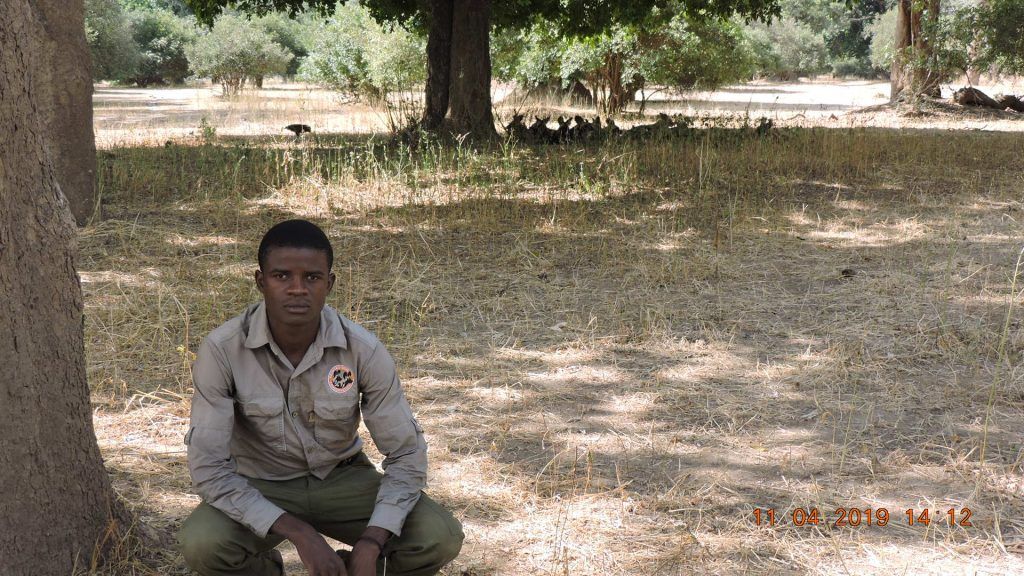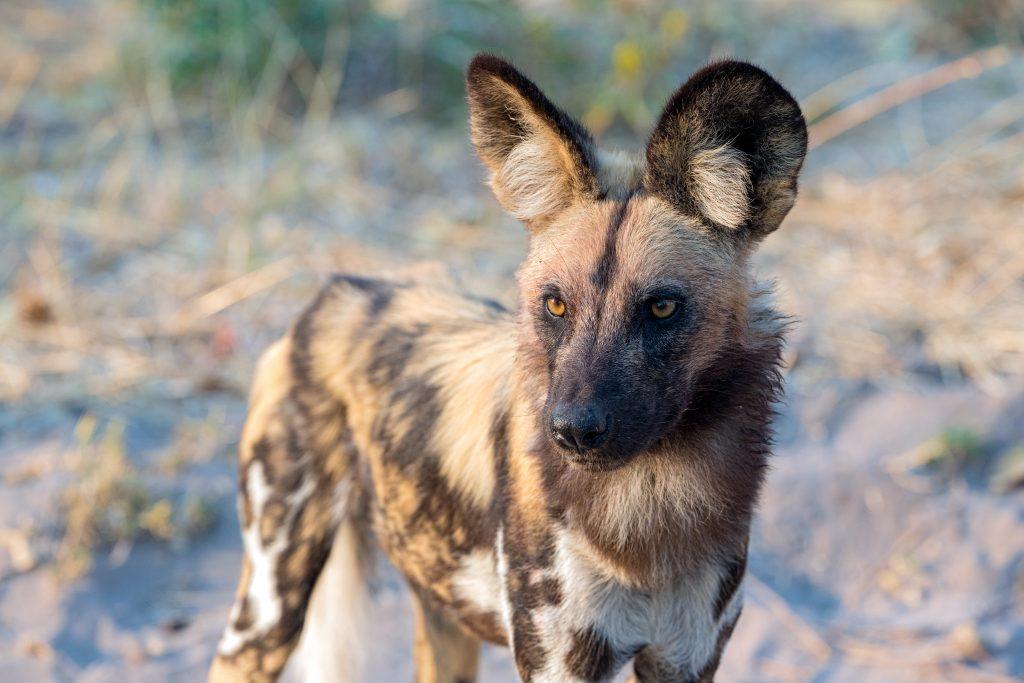As the light of the sun dwindles and the sky saturates to a celestial blue, a Zimbabwean conservationist catches sight of young wild dogs playing in the brush. Thomas Mutonhori has become well acquainted with the inner dynamics of this pack in Mana Pools National Park, and catching this sight is an exciting moment. For over two years, he has conducted research and data collection in an effort to conserve one of Africa’s rarest predators, the painted dog.
As part of Painted Dog Conservation (PDC), Thomas researches and raises community awareness of the Mid-Zambezi painted dog population, one of the last strongholds of the species. Inspired by Thomas’ merit, Dr. Esther van der Meet and Peter Blinston of PDC enthusiastically nominated him to become a 2019 WCN Scholar. With WCN’s support, Thomas is pursuing a Master’s degree in Animal Ecology at the National University of Science and Technology (NUST) in Zimbabwe. His research seeks to bolster painted dog conservation by gaining new insight into community perspective and data on conflicts between humans and painted dogs.

Just a century ago, over 500,000 painted dogs roamed across Africa. Today, an estimated 6,600 painted dogs remain. Habitat fragmentation, poaching, and human persecution continue to impact their numbers. Direct human conflict is the greatest threat to the painted dog, and it represents the most significant obstacle to conserving the species. The opportunity to improve the relationship between people and painted dogs is what drives Thomas each day.
“I have always liked wildlife, but growing up in a rural area next to a national park made me realize at an early age that traditionally most Zimbabweans perceive wildlife as a pest,” says Thomas. Locally, painted dogs are still widely held to this view and readily exterminated to prevent livestock predation. As painted dogs struggle with fragmented habitats and competition from larger predators, such as lions and hyenas, their search for sustenance is moving them beyond protected areas and into communal lands. As a result, collisions between painted dogs and humans are now more commonplace.
Thomas is now halfway toward completing his MPhil in Animal Ecology from NUST. Previously, he earned a Bachelor of Science in Geography and Environmental Science from the Great Zimbabwe University and a Higher National Diploma in Wildlife Management from the Mushandike College of Wildlife Management.
As a ranger and field researcher, Thomas has accumulated years of rich conservation experience across a range of protected areas in Zimbabwe. From the majestic red cliffs of Gonarezhou National Park to the riverine wilderness of Mana Pools, Thomas has tirelessly worked to protect painted dogs and other species, including the white rhinoceros. During his time at Kyle Recreational Park, Thomas conducted rhino monitoring and community education, and he carried out anti-poaching measures and arrests in the Chiredzi River Conservancy.
Thomas is now trekking between communities surrounding Mid-Zambezi protected areas to learn how people interact with and perceive the painted dog. He is hoping to gain a better understanding of how to improve community engagement with painted dogs and convince locals to take part in protecting these endangered animals. His wholehearted motivation is to “conserve painted dogs so we can all continue to see and enjoy this carnivore.”


